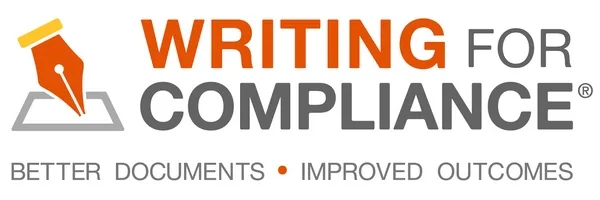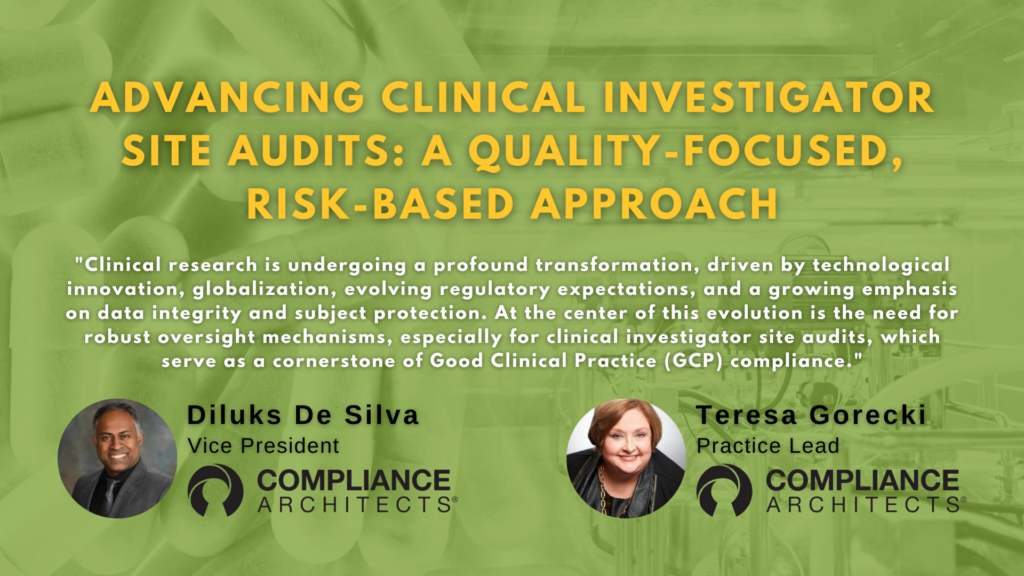Why do good manufacturing operations have inadequate FDA inspections? FDA warning letters and 483s are rife with references to manufacturing controls and batch failures, SOPs and QC procedures, complaint handling, and CAPA investigations. But in many, perhaps even most cases, the root cause is not an actual failure to meet regulatory requirements in these areas, but rather a failure to communicate how these activities were carried out and establish they were in conformance with your company’s procedures.

In other words, a primary problem behind many FDA citations is poor compliance writing. Writing so the regulators can understand your actions — writing for compliance — must combine practical technical, business, and regulatory writing to create a compelling and easy-to-follow narrative for FDA investigators and other key audiences. Well-written compliance documents guide FDA investigators through a captivating story that illustrates clearly — with no need for additional questions or follow-up — how activities and practices comply with regulatory requirements and your internal procedures.
Table of Contents
FDA Regulations and Guidance
Neither regulations nor FDA guidance provide any requirements for writing per se. However, agency inspections are heavily document-focused, so it stands to reason that higher-quality, more explicit writing will help ensure that compliant operations are highlighted. Phrases like “no justification”, “unclear from the information provided”, “fails to provide rationale” or “no documentation” on warning letters or in 483s can be code words for poor writing.
FDA regulations establish the basic requirements that should be met for each key regulated activity—be it batch testing, compounding, CAPA investigations, or other manufacturing/quality control activities. Further, FDA guidance based on the regulations outlines expectations in addition to those basic requirements and often the information and data the agency expects to see in your documents.
When an FDA investigator calls, they arrive with a standard list of documents to review and expectations for those reports. Above all, investigators expect every document to tell a complete story about what happened during the activities covered in the reviewed reports.
An incomplete or fuzzy accounting will raise red flags for the investigator. Since the foundation of FDA inspections lie in the adage “if it wasn’t documented, it didn’t happen,” an investigator’s default response to unclear documentation is the assumption that SOPs weren’t followed and regulatory requirements weren’t met.
A good compliance document will describe the appropriate, robust execution of activities in accordance with SOPs. It will clearly show conformance to regulatory requirements and a solid understanding of the applicable engineering and technology requirements. It will also consider and discuss the relevance of all pertinent clinical, medical, and scientific principles.
Telling the Right Story to the Right Audience
Every document within your quality system is theoretically open to FDA inspection. Therefore, unless you can predict precisely which documents an investigator will want to see, all documents within your quality system must be suitable for an investigator to review — at any time! To be ready for FDA inspections, documents should include detailed descriptions of the activities and the technical and regulatory context of the activities.
Activities must be described in detail, with a clear, end-to-end narrative, rather than a collection of random statements and disconnected, out-of-sequence information dumps. Excellent compliance-implicated documents result from careful attention to having a clear purpose in mind for each document and a thorough understanding of the needs of the target audience, always including the FDA.

The purpose of any compliance-implicated document is to completely and thoroughly describe and document the subject-regulated activity—in other words, to tell the story of the activity and how it was executed in compliance with the regulatory and SOP requirements. This story must include explanations for why the activity occurred and why the record was written. It also must consist of complete context for the activity, with that context directly linked to conclusions made and actions taken.
The primary audience for compliance-implicated documents is the FDA and its investigators. The story told in all such documents must explain the who, what, where, when, and why of the activity in a way that investigators can follow and understand without additional explanation. The information should show clearly that the activity was compliant from start to finish and accurately represent the conduct of the manufacturer’s employees and management.
A Document’s Structure is Key to FDA Inspections Comprehension
The structure and organization of each document must be designed to meet specific needs. Scattered narrative, disconnected accounting of events, and presentation of random information without context will only make investigators question the validity of the documentation and of the activities the document is intended to describe. A structure that presents a story told in a logical, chronological order, with no plot holes to leave investigators guessing what really happened or whether SOPs were properly followed, will especially help prevent inspectional observations.
Other FDA expectations for documents include clear facts and data, including the scientific basis of all conclusions, comprehensive analysis of all actions taken and conclusions made, and complete explanations of the rationale applied by the manufacturer. Unsupported or conflicting statements of fact, incomplete technical rationalizations, and unsupported conclusions are almost certain to lead to a 483 observation or, even worse, a citation in a warning letter.

The preceding explores a variety of well-known stumbling blocks that can occur when companies write compliance-implicated records, along with some approaches to improve those records. Creating effective documents and focusing on the steps in the sidebar can help regulated manufacturers dodge many inspectional bullets. In a future article, we will discuss techniques for completing those steps in greater detail and how to present resolutions, actions, conclusions, and closure.
Compliance Architects® is a leader in inspection readiness and understands that many FDA inspection failures result from ineffective documentation. Our Writing for Compliance® Workshop training program is the FDA-regulated industry’s first and only formal training program devoted to improving FDA and regulatory inspection outcomes through improving writing skills within regulated companies.
Elevate Your FDA Compliance Writing with Writing for Compliance®

Join us at Writing for Compliance®, a workshop designed exclusively for the FDA-regulated industry to improve writing skills and enhance regulatory inspection outcomes.
Proven Excellence
With a six-year track record serving FDA-regulated companies, Writing for Compliance® boasts impressive results:
- 95% found the workshop highly relevant to their roles.
- 94% would recommend it to their colleagues.
Key Program Areas
Our revamped program covers critical writing aspects for regulated industries:
- Discover the essential factors for success in FDA and regulatory inspections.
- Learn how to craft documents for regulators as the primary audience.
- Master the art of presenting data, statistics, and scientific information.
- Create documents that meet rigorous FDA inspection standards.
Experience the synergy of compliance excellence and effective writing at Writing for Compliance®.
Click here to Elevate your compliance standards with Writing for Compliance® today!
You can also fill out the form below for more information.





